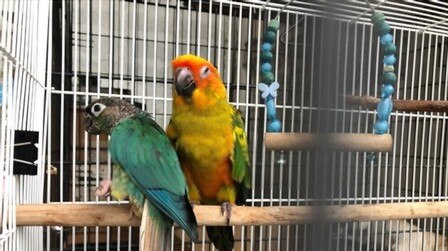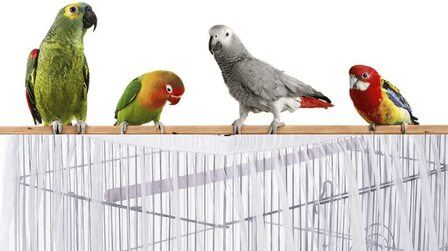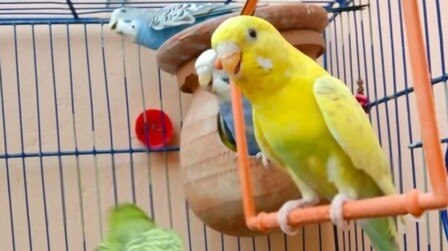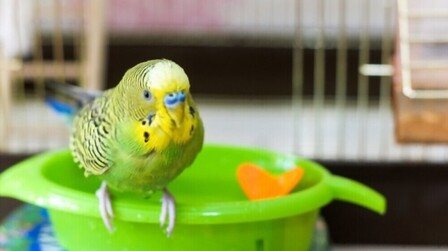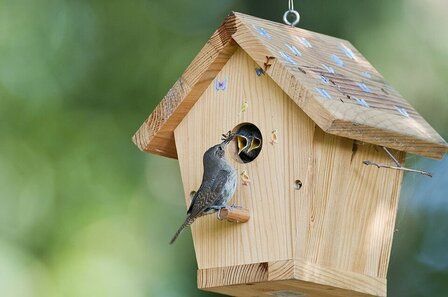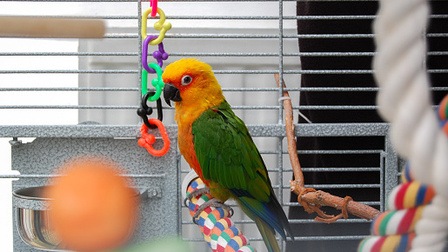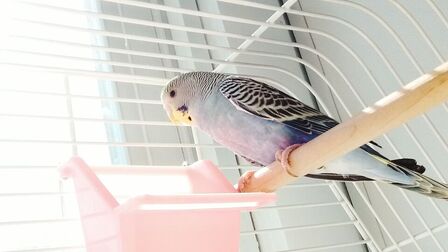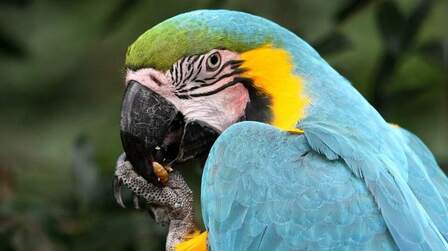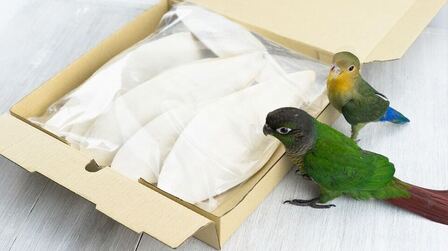Binoculars are used for hunting, birdwatching, astronomy, tracking the action at sporting events or concerts, etc. Each binocular is not created equal, and it is possible to choose the right pair. For specific preferences, each individual will make a big difference in the time spent.
Make sure you can buy the right binoculars for you. Let's learn how to choose bird-watching binoculars with us.
1. Type of Binoculars
Choose binoculars with 7x to 10x magnification in general
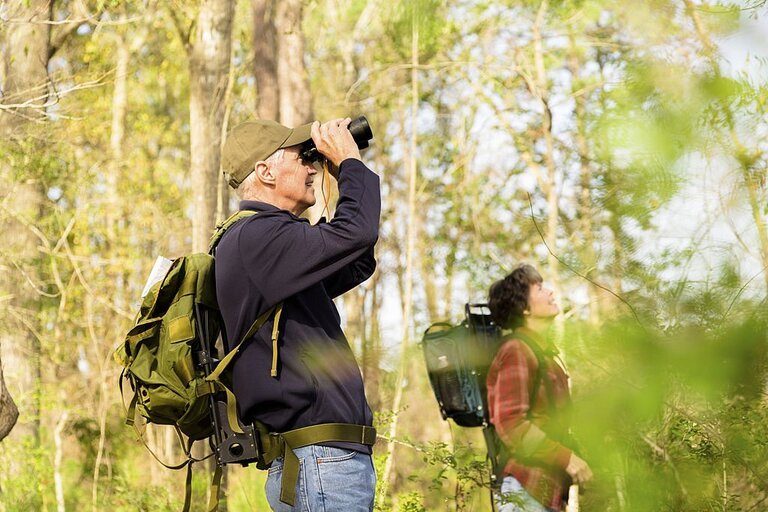
The number before the "x" describes the binoculars referring to the magnification factor, or how much closer the object will appear. If you want binoculars for general use rather than for specific interests, it is best to use binoculars with 7x to 10x magnification.
As they provide adequate magnification for most activities and do not lose stability if the handgrip is a bit shaky.
Binoculars are called with 2 numbers, 7 x 35 or 10 x 50. The second number is the diameter of the main lens (objective) in millimeters; The 7 x 35 lens has a diameter of 35 mm (1.38 inches), while the 10 x 50 lens has a diameter of 50 mm (1.97 inches).
Although binoculars have a small magnification factor, when the image is produced, the magnification is less than that of binoculars with a higher magnification factor.
where this image will be sharper and the field of view will be wider. If you need a wide field of view like watching a football game from a high chair, choose a lower magnification.
High magnification search for long-range hunting

If you're hunting in the mountains or the open, binoculars have a large magnification like 10x or 12x.
Remember, the higher the magnification of the binoculars, the more blurred the image will be. Although the image you see will be larger, the field of view will narrow and it will be difficult to keep the image in focus.
If you choose binoculars with 10x magnification or more, invest in a pair with a tripod socket that can mount and secure your binoculars as needed.
If you are hunting in a forested area, binoculars with a 7x to 10x magnification factor will be more appropriate.
Prioritize larger lenses for birdwatching or low-light activities

If the binoculars have larger objective lenses that have a wide field of view, it is great for finding and tracking birds when watching birds. Since they can gather a lot of light, this is important during low-light activities such as hunting at dawn or dusk.
For astronomy, it is recommended to use an object with a larger objective length (70mm) and low magnification to see large dim objects such as nebulae and galaxies such as Andromeda (M31).
If you want to see the finer details of smaller birds at a distance, then you can choose binoculars with larger magnification and smaller lenses.
Note that the larger the lenses, the heavier the binoculars will likely be. In general, standard-size binoculars have an objective diameter larger than 30mm, while compact-size binoculars have a lens diameter less than 30mm.
Determine your budget in advance

In general, binoculars are more expensive, have higher image quality, and are more durable. However, many cheap binoculars are durable enough and have good optical quality. Therefore, based on the price range that you feel comfortable buying binoculars
How to handle the weight of binoculars

If binoculars have high magnification and heavy large lenses. If you plan to travel long distances or don't have a lot of storage space, binoculars are less powerful but lighter.
You can also compensate for the weight and stabilize the binoculars by attaching them to a tripod or with a strap that allows you to carry them around your neck.
If you plan to carry them around your neck while hiking, heavy binoculars can be a burden to watch out for.
Water resistance compared to waterproof binoculars

If you are not planning to use the binoculars in bad weather or frequent wet conditions, waterproof binoculars can be used. If you plan to go white water rafting or skiing, buy waterproof binoculars instead. Coupled with quality is more expensive.
2. Evaluating for a pair of binoculars
Choose glass lenses for quality images

All binoculars have glass lenses, which results in better image quality. In addition, the glass also reflects some of the light that hits it, although this can be offset by suitable coatings. Therefore, make sure that the binoculars you intend to buy have glass lenses.
Be aware that glass lenses are usually more expensive than plastic lenses.
Binoculars made with Extra-low Dispersion (ED) glass produce the best quality images, which is the most expensive lens material used in binoculars.
- Lens coatings are also described with codes:
- C refers to several surfaces that have been coated with a single coating
- FC is all other glass lens surfaces that have been coated
- MC is a surface that has been coated with many layers
- FMC is all laminated glass lens surfaces. Multilayer coatings are usually more secure than single coatings but this adds to the cost of the binoculars
Plastic lenses for durability

While it doesn't give you the best images, they are much more solid.
If you're using the binoculars primarily outdoors and in rough conditions where durability is also an important factor, here's your chance to pick up a pair with plastic lenses.
Binoculars with plastic lenses are a good choice for activities such as hiking and climbing, or for children holding binoculars for the first time.
While plastic lenses are inexpensive, a plastic lens unit that provides the same image quality as a glass lens unit will cost more.
Eyepiece evaluation

The eyepiece lenses are always a comfortable distance from the eye, or further if you wear glasses. This is called "eye reduction" and ranges from 5 to 20 millimeters (0.2 to 0.98 inches).
If you wear glasses, you will need 14 to 15 mm (0.55 to 0.59 inch) or larger eye relief, as most eyeglasses are 9 to 13 mm (0.35 in) away from the eye. to 0.5 inches).
On the other hand, many binoculars include rubber eyecups around the eyepiece to help place the eyepiece on the eye when the binoculars are in use. Therefore, if you wear glasses, these binoculars have eyecups that can be retracted or flipped outward.
Checking the focus function

It is necessary to consider how well the binoculars in the store should focus and measure the distance between them and the object of view.
Binoculars focus in one of two ways. Usually, binoculars have a centering mechanism, as well as a diopter adjustment in case one eye is stronger or weaker than the other. However, waterproof binoculars have separate focal lengths for each lens, with controls on each eyepiece.
Furthermore, to adjust the binoculars to the right eye, close the right eye and focus the left eye on a distant object using the central focus.
Then, close the left eye and use the focus ring on the right eyepiece to focus on the right eye. This compensates for the difference in the strength of the eyes.
However, there are still some binoculars that do not focus and cannot adjust the focus. These binoculars can cause eye strain.
Designing a prism to judge the quality of an image

All binoculars have a primary lens that is positioned wider than the eyepiece, thanks to a Porro prism. But they make the binoculars larger but make nearby objects appear three-dimensional.
In addition, binoculars use roof prisms so that the main lenses are aligned with the eyepieces, making the binoculars compact. On the contrary, it comes at the expense of image quality.
Furthermore, roof prism binoculars can be built to provide the same image quality as Porro prism binoculars but at a high cost.
Inexpensive binoculars use the BK-7 prism, which tends to be perpendicular to the side of the image, while the more expensive binoculars use the BAK-4 prism, which delivers more light and a more circular image, high solution.
Famous Brands

Consider how long the manufacturer has been in business and what other optical products they make, as well as how they handle problems if the binoculars fail.
Pay attention to whether the manufacturer offers a warranty on the binoculars.
If a pair of binoculars are expensive and they are broken.
Conclusion
Bird watching is a fun pastime that promotes mental and physical activity. This trip requires you to walk around to spot the birds, keeping your body active.
Furthermore, you need to compare the features of the bird you see with those listed in the field manual, always prompting your brain to learn more about the topic. Through the ways that we share above, we wish you to choose a good binocular product.

